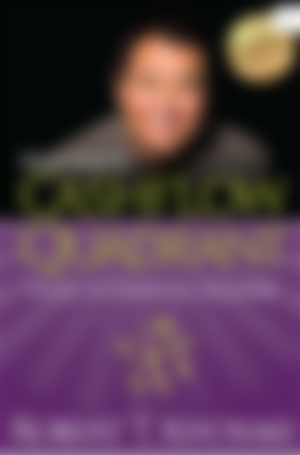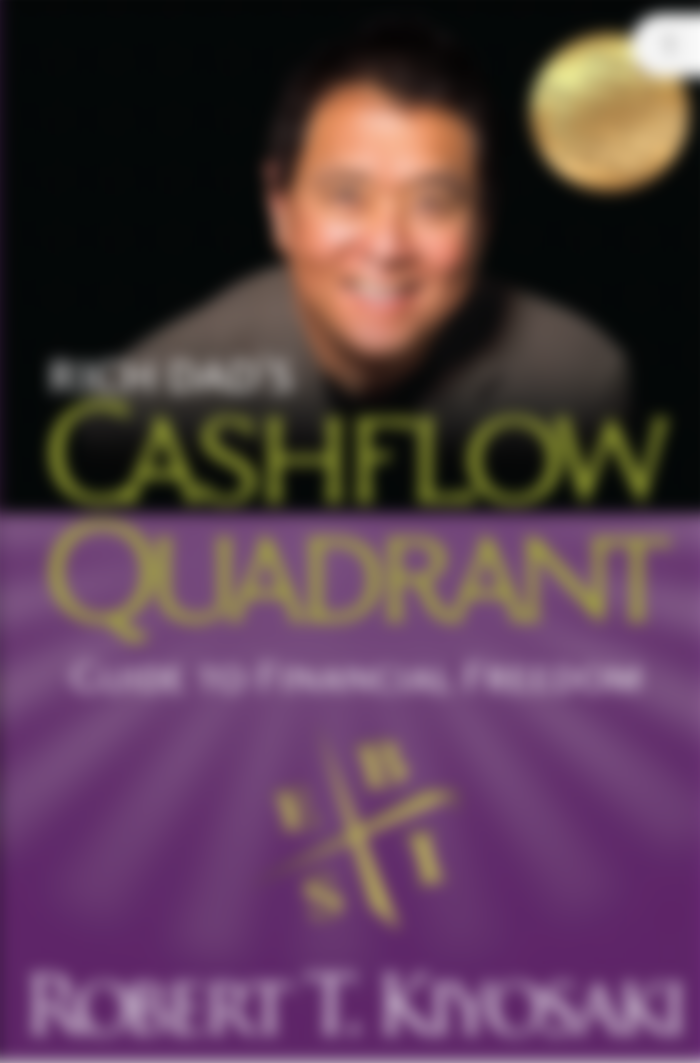
Robert started with his background on how he became broke, homeless in 1985 and why getting a job wasn’t going to solve his problem but did a few odd jobs along with his wife Kim, to get by. While staying with a friend they devised plans become rich and never fear of being broke again even when they do not work. He continued to mention that by 1989 they became millionaires and in 1994 they achieved financial freedom, he was 47 while his wife was 37.
Robert said, it took dream, determination and willingness to achieve his financial freedom. He explained further that it doesn’t take money to make money and further reiterated that was a false and wrong opinion of people. He said, it is up to one to know the quadrants which suits one. Whichever we choose does not depend in what we learn in school whatsoever but who we are at the core. Regardless of what we do, we can still be in any of the four quadrants.
He continued to mention his two fathers’ ideas about money how they shaped his own mentality and also his core identity. He said his experience made him lean towards the B and I section of the quadrants.
In chapter two, he maintained that even though each of the quadrants have their own advantages and disadvantages, none is above the other. He said Cashflow Quadrant is not a set of rules but a guide to those who wish to follow it.
Robert stated the difference between the rich and everyone else, he stated that they receive 70% of their (the rich) income from investment and less than 30% from wages while reverse is the case for the poor. He talked a great deal about investing and how it is defined by the risk in it and how pension is greatly exaggerated and being watered down by government and agencies alike.
He went further in chapter three about people in E and S quadrant he said, their word is security and how they run away from risk, but he further explained that this isn’t their fault but what they have instilled in them since childhood, “Go to college, get good grades and find a secure job.” He said if at all people in S quadrant decides to start a business they usually fail and also how the statistics is not in their favour.
He went further on how taxes, how it is only the poor people in E and S quadrant pay taxes or if or when the rich pays it is minute as compared to the people in E quadrant because of how their income is made. He continued to say that investing is the best plan for financial freedom but not without the necessary education which is not found in school, “the path to financial freedom is on the right side of the quadrant,” he said.
Robert started chapter four to tell us about the kinds of business systems. He went further to tell us about how success is a poor teacher, how failure leads to experience to not make the same mistake(s) until we finally achieve our goal. He continued to mention about how his three business failed and how that experience moulded him into being who he is today. Being a B has a lot of ups and downs and he stated a few guidelines to achieving the dream of being a B; get a mentor, buy a franchise, go into network marketing etc. In chapter five, he explained the five levels of investors and the importance of knowing which level you are and working on moving up the ladder. Knowing oneself and having adequate financial knowledge will greatly help in becoming a master (Level 5) investor. He further reiterated that I quadrant is the best of all for achieving financial freedom and security.
In chapter six, he talked about perspective about money, how we see money will greatly impact our decisions as a B or an I. He talked about assets and liabilities and how they work either in your favour or government and banks favour. He went further to talk about the impact of financial facts and opinions and how to differentiate so as to make good financial decisions.
He continued in chapter seven about becoming who you are meant to be in financial world. Attachment to the way we get money shapes our thinking, he mentioned few examples about people who got attached to the ‘securities’ of people in E and how it is to break the pattern. He continued with a few quotes from the great minds of the past about failures of traditional education. “You can be anything you want in any of the quadrants.” He said. Financial vision minimizes risks on the right side of the quadrant. The left side is more riskier because of their little or no knowledge of financial education and also security is all they wanted. He opened chapter eight on how to get rich, he mentioned a few points on importance of the game of monopoly in build his mindset from his early days. He reiterated that to get rich one has look toward real estate and how thinking and doing things outside the box. Goal setting, vision and Cashflow is about being an entrepreneur (B) or investor (I) and not doing what the rich does. Taking calculated risks even when you don’t feel like doing it is what separates the right side from the left side of the quadrants.
In chapter nine, he stated how the rich get richer by doing what the bank does. In his words he said “Be the bank and not the banker.” He went on to explain the tactics of making money from almost nothing and how history always seem to repeat itself but how people keep on making the same mistakes. He talked a great deal about economy crashes and how it has been a great tragedy to people who do not foresee them but how advantageous it has always been for the people who makes the best of it. In his opinion, there will always be factors that will greatly affect the economy of the world which in turn leads us to either depression or recession. “Greed and fear are what drives the financial markets”, he said. He went further to explain why the government does not restrict B and I simply because they do not exist as a human bodies but rather operates as a corporate bodies. He went further to say that having smart financial advisors will also help a great deal in reaching our financial goals and also for warning for changes in laws that may restrict us.
In chapter ten, he said moving from the left side of the quadrant to the right side does not have to be overnight, he does not even recommend it because it is not ideal and later such person might relapse back to where he was coming from due to being overwhelmed. He explained the benefits of thinking like the rich (B and I), having their mindset and looking at the world from their perspective. Chapter eleven opened with how one needs to mind his business and not other peoples’. He went on to specify instances and how taking action for one’s financial life, and setting financial goals opens one’s mind about what to do and how to go about it. He continued in chapter twelve on how to take control of one’s Cashflow and about how every one of our liabilities is someone’s (government or banks) assets. He went on how making more money will not solve our financial problems especially if the Cashflow management is the problem. Proper Cashflow management begins with knowing the difference between assets and liabilities, left side of the quadrant is risky while the right side is the logical path to financial freedom.
In chapter fourteen, he asked us to decide what kind of investor we want to be. He stated the guidelines on how to get there by starting small and learning how to solve problems. For financial fast track, he mentioned again to mind our business and take control of our Cashflow. He recommended being a B before moving to being an I. In his words “you master solving business problem, you have excess Cashflow and your knowledge of business will make you a smarter investor.” Seek mentors who have been to where you see yourself in the future, they provide you the guidelines and also steer you towards the right path when you are faring off the road. He also said not to fear disappointments and to make them our strength. Always expect disappointments then when it comes you will not be surprised and be depressed, on the contrary learn your lesson, get up and start over also once more have a mentor on standby ready to help.
In the final two chapters, he mentioned the power of faith and believing in oneself, desire and determination and how they are our greatest strength. Be aware of what you say to yourself because that becomes your truth, be positive always even when things are not going your way. He concluded by saying that getting rich is the goal and becoming an investor as fast as you can should be your priority while taking the steps to financial freedom without skipping one. “Your boss’ job is to give you a job, it is up to you to make yourself rich.”
